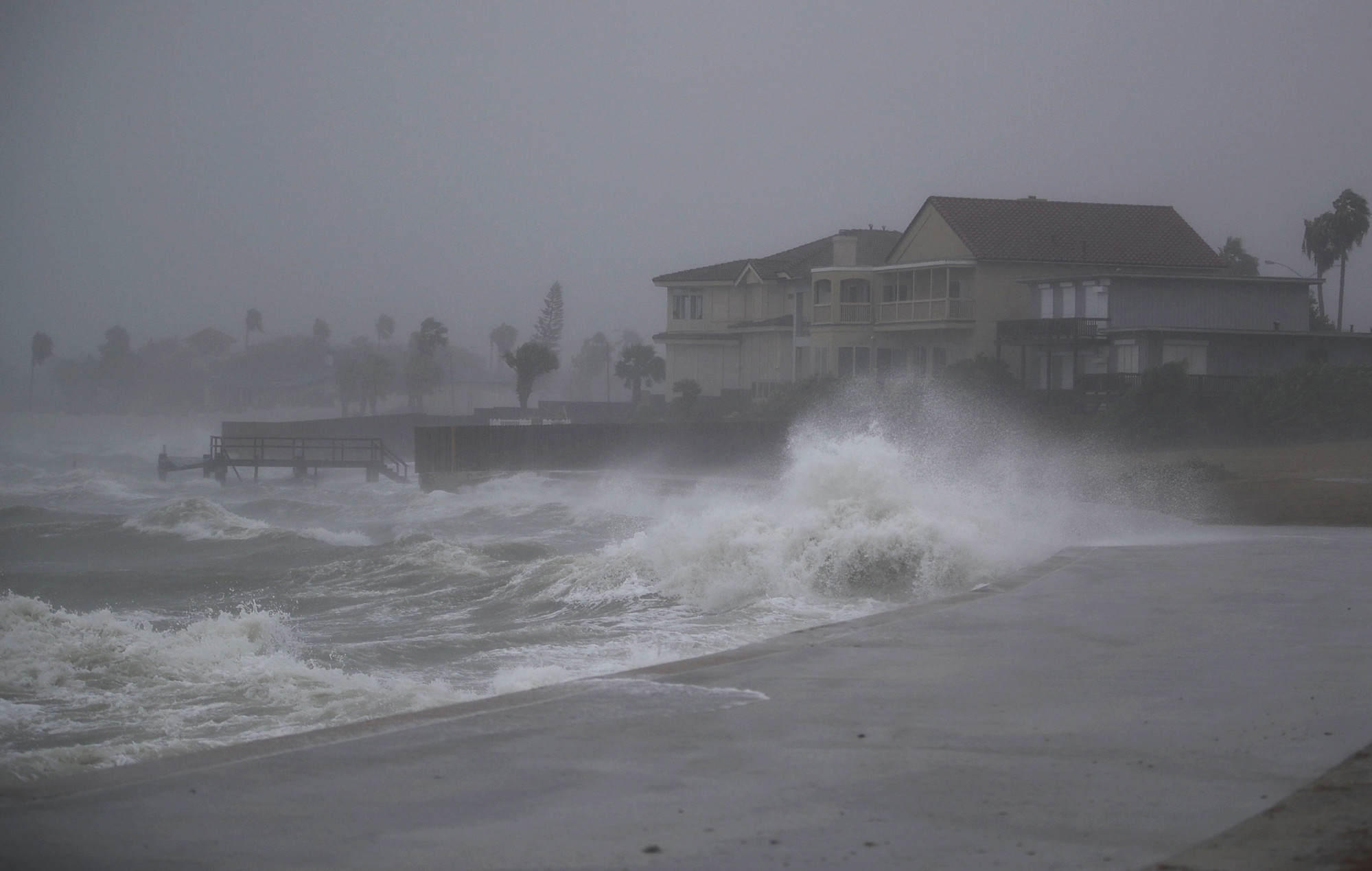Sign up for The Media Today, CJR’s daily newsletter.
The Texas Tribune and ProPublica last year published a multi-part investigation looking at what would happen if Houston was hit by a major hurricane.
The reporters partnered with scientists at several universities in Texas to conduct simulations, gaming out various storm scenarios for the country’s fourth-largest city, with its rapidly growing population, huge stores of oil and natural gas, and a major NASA facility.
The conclusion: The city and region were woefully unprepared for a major hurricane, with inadequate infrastructure for evacuation and flood control. A major storm would inflict catastrophic damage, bringing “economic and ecological disaster.” The series won awards, including a Peabody and an Edward R. Murrow, but it didn’t lead to substantive policy changes or big new investments in infrastructure.
Now the same journalists are watching nervously as Hurricane Harvey inches closer to the Texas shoreline. While landfall is expected between Corpus Christi and Houston, one of their worst-case scenarios could still come true.
TRENDING: “It will follow me to the grave,” unnamed editor says of botched investigative series
“Is it actually going to be as bad as what people predicted when we reported the earlier series?” wonders Tribune editor Ayan Mittra in an interview with CJR. “Are these valuable neighborhoods and other industries at real risk like we had been told?”
This storm was predicted. We’ve had years to prepare. https://t.co/VcB9jBIdKg https://t.co/XVqNwrLObH
— Scott Klein (@kleinmatic) August 25, 2017
The series, dubbed “Hell and High Water,” used data, simulations of flood damage, and extensive reporting to chronicle how a “perfect storm” would devastate Houston and wreak havoc on the US economy. The initial reporting included nine stories, with two follow-ups. The Tribune also partnered separately with the Beaumont Enterprise on a series warning the state is unprepared for a mass evacuation.
Harvey is expected to make landfall on the Texas coastline late tonight or early tomorrow as a Category 3 hurricane, with winds up to 125 mph and an expected rainfall of up to 30 inches. The storm, which quickly developed into a hurricane this week after it hit warm Gulf waters, will be the first major hurricane to hit the United States since 2005. Coastal areas of Houston and Corpus Christi are expected to be hit especially hard.
Harvey does not look like a worst-case-scenario storm for the city of Houston, though its damage is likely to be extensive, says ProPublica news applications developer Al Shaw, one of the members of the Texas Tribune-ProPublica collaboration. He and Deputy Managing Editor Scott Klein based their data and map simulation on variations of what happened during Hurricane Ike in 2008. (Ike did not make landfall in the US, but did extensively damage the southern Texas coast.)
ICYMI: Here’s what non-fake news looks like
If Ike had struck 30 miles to the southeast, it would have been a much bigger disaster for Houston. Scientists quoted in the project estimated a 1 in 350 chance that such a “perfect storm” could happen in any given year. “The winds would have pushed water into the highly industrial areas and a bunch of the low-lying and rapidly expanding suburbs as well as the Space Center,” Shaw says. “Harvey isn’t going to be anything like that. The track might come back toward Houston, but it isn’t going to take the approach we wrote about in our original story.”
Harvey is expected to pose more of a threat from heavy inland rains than via a storm surge, the most damaging scenario for the Houston Ship Channel, which contains oil and other natural resources.
Shaw says one proposed solution to protect Houston from major storms is a seawall in Galveston Bay. The city of Galveston is infamous in hurricane lore as the landfall spot of a storm in 1900 that remains the deadliest natural disaster in US history; as many as 12,000 people were killed.
However, it would cost more than $10 billion and take over a decade to build, even if construction started tomorrow.
The most relevant part of the series for readers worried about Hurricane Harvey will likely be “Boomtown, Floodtown.” The follow-up story, published in December, explains the possible effects of inland flooding using data from tropical storm Allison in 2001. “It wasn’t a direct hit [to Houston] but it lingered over the city and about 73,000 homes were flooded,” Shaw says.
The reporters on the Texas Tribune-ProPublica collaboration had hoped the project would be a wake-up call for government officials, who rarely set aside funding for infrastructure or coastal protection before a disaster, Shaw says. “If New Orleans had come to the Army Corps before Katrina and said, ‘We need $14 billion, our levy is about to fail,’ they would have said ‘Sorry, that’s not going to happen without an act of Congress’”
“Unfortunately it might take a disaster,” Shaw adds, “before Texas wakes up and realizes we need to send some real money to protect one of the nation’s biggest ports, where we keep most of our oil and chemicals.” If Houston was directly hit by a storm of Harvey’s magnitude, Shaw says, the environmental damage would exceed the BP Deepwater Horizon oil spill.
After the series appeared, the reporters reached out to the state’s entire congressional delegation and both of its US senators, one of whom, Ted Cruz, ran for president. “So none of them can say nobody could anticipate the calamity a large storm could inflict upon their constituencies,” Klein wrote.
“Ike was supposed to be that wake-up call to do something about this,” Shaw says. “All I can hope for is that this will be another wake-up call, and Texas will ask for more action before the ‘big one.’”
ICYMI: The New York Times reporter who tweets like its going out of style
Has America ever needed a media defender more than now? Help us by joining CJR today.



